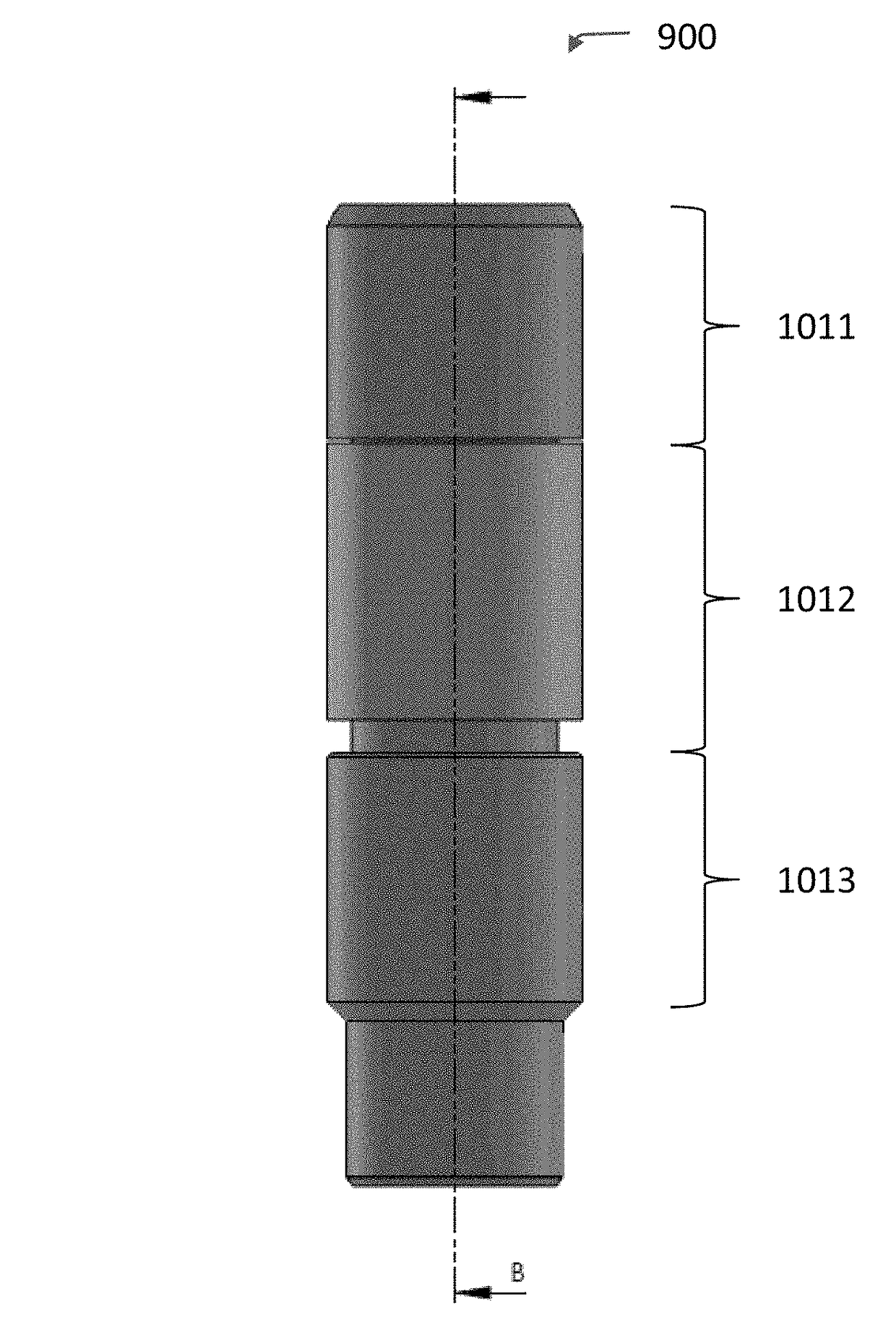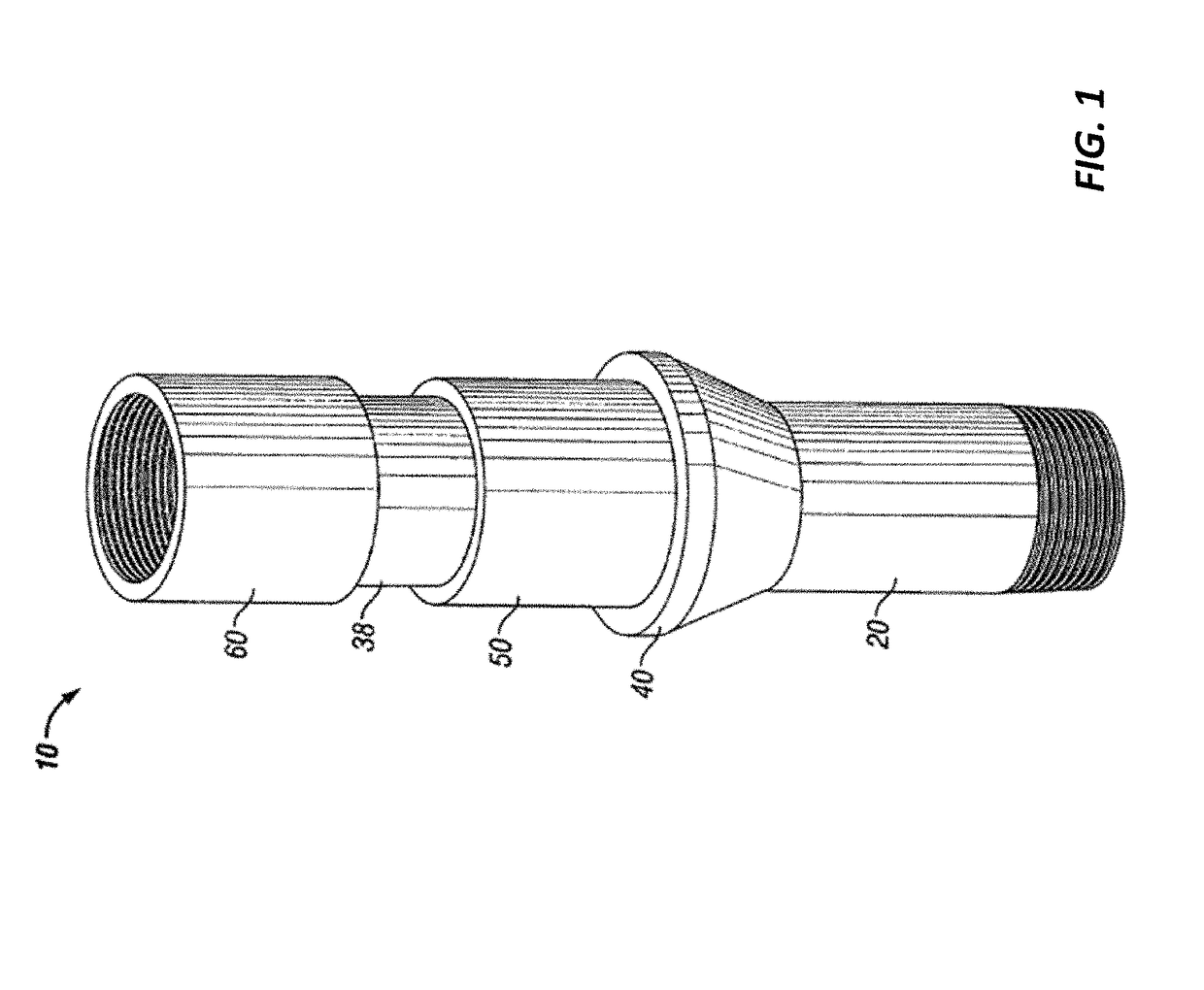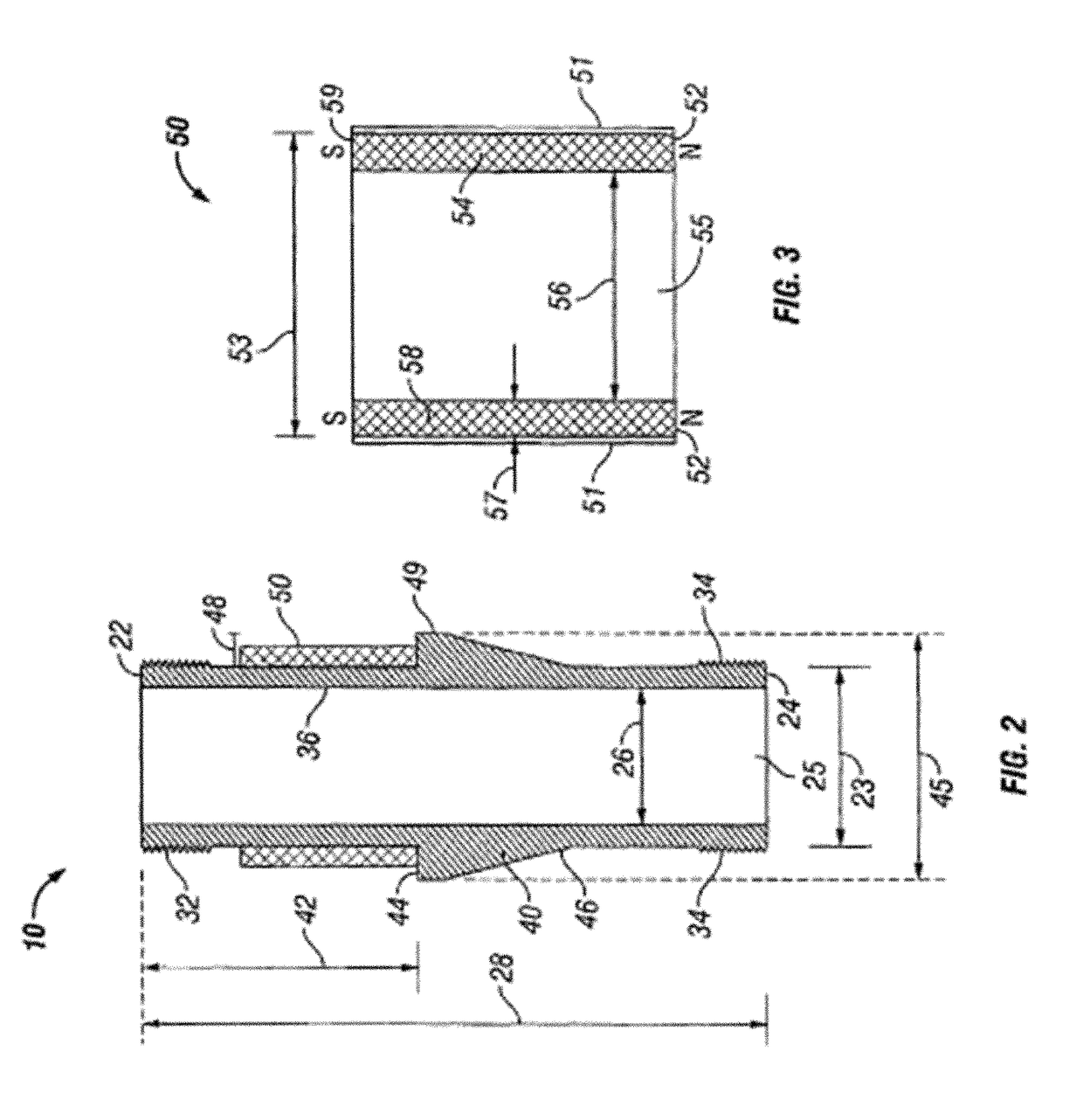The problem of unwanted
solid deposition in oil wells, gas wells, surface production equipment, and in
hydrocarbon flow lines has presented a challenge to the
petroleum industry since the first wells were drilled more than one hundred years ago.
Although
scale deposition is a major problem that interferes with the production of oil and gas, it is not the only problem.
Paraffin or
wax deposition has also been recognized as a major problem from the inception of the oil industry all over the world, as has
asphaltene formation.
The occurrence of these unwanted deposits in hydrocarbon producing conduits and related equipment can result in numerous problems, including reduced production and severe and often costly startup problems following pipeline
shut down.
Other problems with unwanted deposits can include congealing hydrocarbons, interface problems, depositions in tank bottoms, high line pressures, plugged flow lines, under deposit
corrosion, plugging of injection wells and filter plugging.
Scale deposit and accumulation is a significant problem to oil and gas producer wells.
Typically, such chemicals are effective towards and limited to only specific types of deposits.
Despite their advantages, chemical treatments are usually expensive, environmentally hazardous in many cases, and are oftentimes very sensitive, working effectively only on specific crudes or on specific types of unwanted deposits.
Additionally, operation of the well is further complicated because access to the center of the
production tubing is blocked, preventing through tubing, such as wire line or
coiled tubing.
Treatment chemicals are typically not recoverable from the production fluid.
Some deposits are so hard that chemicals are not effective, requiring physical methods for their removal, including mechanical removal.
Occasionally, such processes cause damage to the interior of the tubing and can cause worse scale accumulation rates in the future as a result.
However, while electromagnets can produce magnetic fields of great intensity, their choice for use in downhole environments is often not practical since electromagnets require an electrical power supply, cooling, and periodic servicing.
Although the use of magnetic scale prevention has proven effective for both residential and commercial applications at or near the surface, magnetic scale prevention for down-hole
oil and gas production tubulars has been problematic.
Lack of success in down-hole magnetic scal prevention has several contributing factors, including a lack of understanding of the fluid dynamic characteristics that exist during normal production of a producing oil and gas well and improper use and configuration of the technology.
Thus, these clamps can become lost or stuck in the
wellbore and then require additional expensive
fishing operations for their
recovery.
The protrusion of magnets on the exterior of the tubing will also limit the ability of the magnets to be conveyed into the
wellbore or reservoir in a pressurized condition.
The uncontrolled release of oil, gas or hydrocarbons into the
atmosphere is referred to as a blowout and, in some scenarios, may result in an explosion or fire.
Therefore the use of any
assembly that cannot provide a smooth exterior that would allow for these elastomers to seal on would not be recommended by those skilled in the art of oil and gas well servicing.
Although this configuration eliminates the clamps, the size of the magnets are limited by the interior
diameter of the casing and the
exterior dimension of the
production tubing, and, thus, only smaller, lower strength magnets may be used.
Although the use of nonferrous subs can reduce
distortion and
magnetic field strength losses, the strength of the magnets proved to be ineffective.
This is further complicated when many small magnets having the same polarization are placed side by side.
The alignment and the natural repelling effects generated by magnets with the same polarization in proximity to one another causes great
distortion in the field of
magnetic flux generated by the individual magnets.
Additional energy is lost from the already limited strength of the magnets, and the field of
magnetic flux becomes heavily distorted.
Additionally, this prior art embodiment did not give consideration or provide mechanisms to change the interior velocity of the fluid as it passes through the
magnetic field.
Previous prior art embodiments provide no mechanism for fluid acceleration through the magnetic fielding beyond the natural velocity maintained by the interior
diameter of the
production tubing.
This is due to a lack of understanding of the velocity and or production
mechanics of oil and gas wells production rates.
This generally occurs when the well begins to lose pressurization or become depleted over time as the oil is produced.
This loss of pressurization will further result in a decrease in the well's production velocity.
Additionally, most prior art embodiments fail to take into account the extreme bottom hole temperatures that may exist in oil and gas wells.
It has been shown that magnets degrade or lose strength more rapidly under higher temperature operations.
Therefore the use of magnets that have not been properly designed to endure the higher temperatures will result in degradation and failure.
Extreme conditions may weaken or nullify the strength of the magnets before they can influence the particles in the fluids.
However this
magnetic memory effect can be disrupted as the fluid passes through the interior of the
piping over long intervals.
A shortcoming of prior art magnetic deposition prevention systems is that the
magnet can be damaged during
insertion and / or removal of the production tubular into / from the well due to contact with the inner wall of the casing.
Another shortcoming of the prior magnet deposition prevention systems is that the magnet may be crushed by compression forces along the length of the production tubular or the magnetic
retainer.
 Login to View More
Login to View More  Login to View More
Login to View More 


